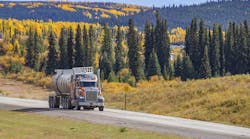The National Transportation Safety Board’s (NTSB) recently released its list of most wanted safety improvements for 2021-2022. Five of the 10 items on the list are highway transportation related; the other areas covered are aviation, marine, and rail, pipeline and hazardous materials.
The list for transportation covers:
- Implementing a comprehensive strategy to eliminate speeding-related crashes
- Protecting vulnerable road users through a safe system approach
- Preventing alcohol and other drug-impaired driving
- Requiring collision-avoidance and connected-vehicle technologies on all vehicles
- Eliminating distracted driving
These are all great things to wish for, but on some level I can’t help but wonder why some of these things are still on the wish list; in other words, why hasn't the industry already solved these issues?
I know most fleets have comprehensive driving training programs that tackle things like speeding, alcohol and drug use, and distracted driving. I doubt if there is a driver onboarding process that does not talk in-depth about these subjects, and I cannot imagine a fleet manager that would condone these types of behaviors. Yet, they continue to persist in the industry.
Ask yourself if you are doing enough to reinforce safety on a regular basis. You can use both a “carrot” and a “stick” approach to safety. You can reward drivers who reach certain safety milestones (like a certain number of accident-free miles), and you can have penalties for drivers who get caught speeding or using their cellphones while driving.
While I would like to think that good onboarding procedures and regular reminders about safe driving practices are enough, the reality is they are not. Maybe each of us needs to examine our commitment to safety to make sure that we are doing more than talking about safety as a core value. Now might be a good time for each of us to make sure that there is a top-down commitment to safety not just in what we say but in the way we operate our businesses.
That does not just mean the policies and procedures we have in place for drivers, but also the safety-related policies and procedures we have in place for technicians and others within our organizations. When was the last time you did a safety audit of your facility to ensure that things like smoke detectors were working properly, that there were no slip/trip/fall hazards, that there is good lighting throughout your facility, etc.?
Also review your vehicle specs and try to include as many safety-related items as you can while still maintaining a good ROI. It is tough to determine the cost of the accident that does not happen because a collision mitigation system alerted the driver that he was following too closely or one that deployed to slow the truck to prevent a collision.
A bit of good news is that these advanced driver assistance systems capture data on the “near misses.” This data can be used to coach drivers to improve driving behavior. Having actual proof of hard braking, for example, will make it hard for drivers to argue that they were not following too closely. A side bonus is that having this data in the form of video evidence can be useful in case there is a collision that was caused by another driver cutting in too close in front of the truck.
I think we all can get behind NTSB’s most wanted list and continue to make safety improvements in our day-to-day operations.



